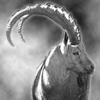
 |
IBEXtrax.com - Cascade Mountains of Washington StateNorth Cascades Park |
|
|
04 020 John B Chopping Block Pk from Mt Ross
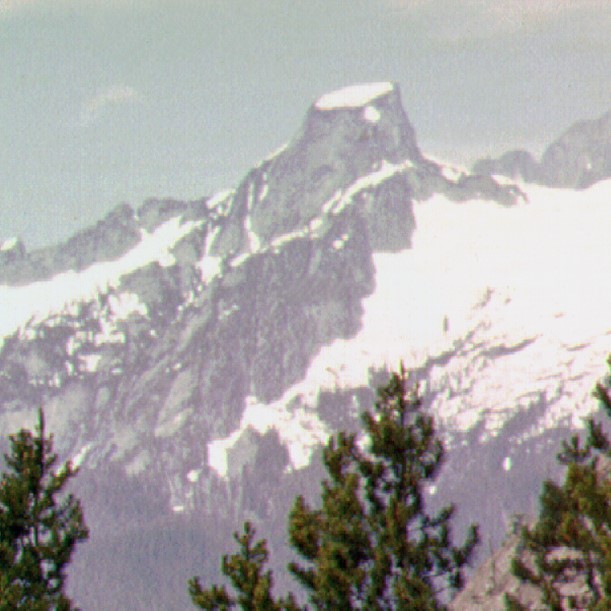
On the Ascent of Mount Ross the Chopping Block and the Terror Glacier came into view.
04 022 Crimson clouds at sunset over Mt Despair
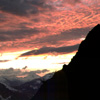
Crimson clouds paint the sky as the sun sets over Mt Despair. "…Red at night climbers delight" is an adapted Norwegian fisherman's saying, were the weather rolls in from the ocean to a mild maritime climate. Likewise in the Pacific Northwest, when there is clearing out over the Pacific Ocean, the setting sun illuminates the bottom of the clouds to announce that good weather is on its way. North Cascades Park. 7/76
04 025 Mint Tea break on McMillan Ledge Warren
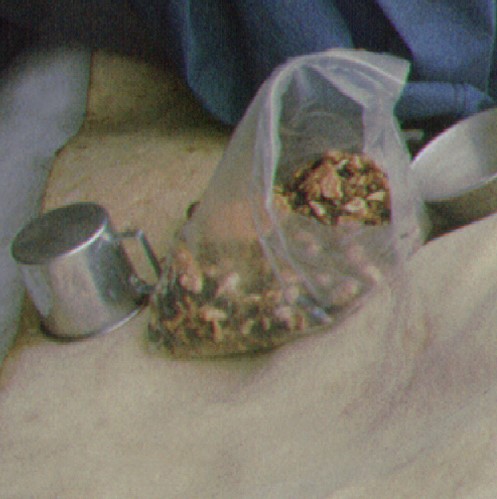
After groping Northward from Mount Ross in the fog and wind-blown sleet for most of two days, the climbers were able to find the key ledge at the base of McMillan Spire that leads to Stetattle Ridge col and provides access to McMillan Cirque. Sheltered from the wind it was time for a mint tea break and try to put a dent in the massive glorp bag.
04 027 Traverse to Azure Pass Elephant Butte John B
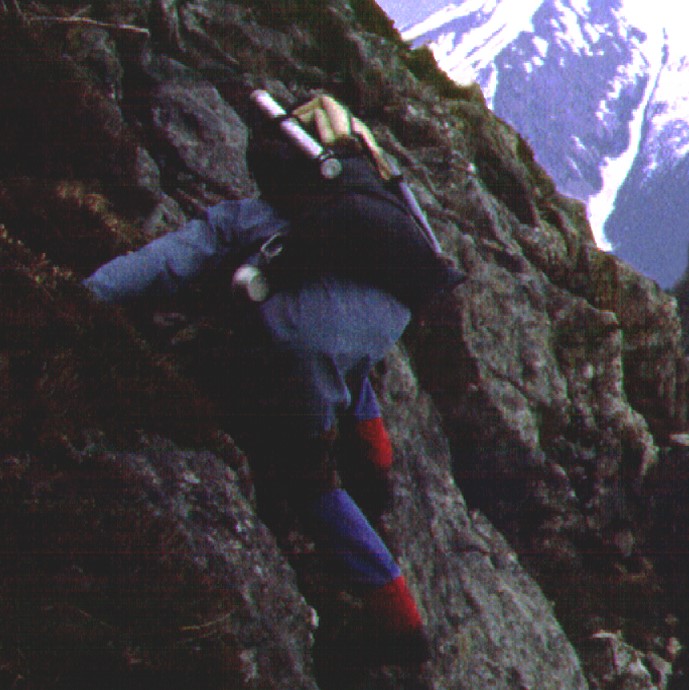
Instead of testing the questionable cornice that hung from the east ridge of McMillan Spires, we drop down to the small evergreens and ledges of heather on the Azure Lake side of the ridge. On the traverse to Azure Pass, there was an unusual amount of scrambling on tree holds, and tedious exposed free climbing. If you slipped or a heather clump pulled loose, next stop Azure Lake three thousand feet below.
04 028 Spectacular Hanging Ice above Azure Lk
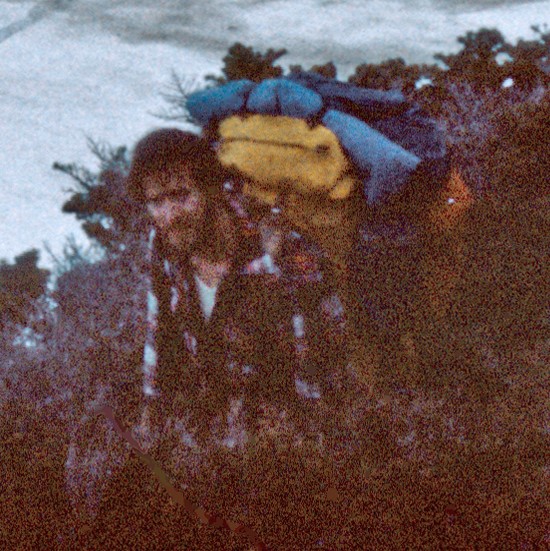
The spectacular hanging ice of the unnamed glacier above Azure Lake was very active and frequently discharging large blocks with a boom down slope. Yes, that is me muttering "don't look down" and gingerly clutching the dwarf evergreens.
04 029 First view of the Season McMillan Cirque
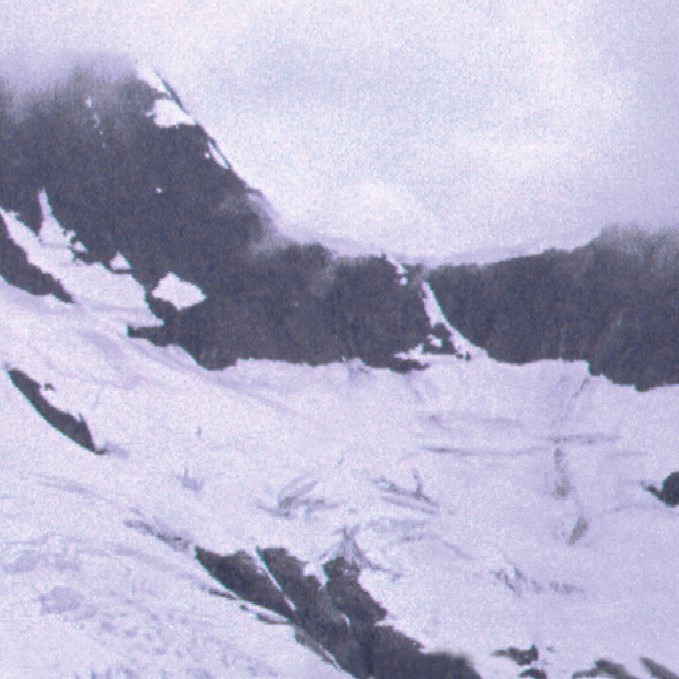
The first view of the season for McMillan Cirque looked just as rugged, remote and menacing as remembered from the last trip. It wasn't a quiet wilderness with the thundering boom of falling ice frequently echoing around the Cirque. All this on top of the rumbling rush of rapids and the constant crashing cascade of the numerous waterfalls at ever turn. Southern Picket Range, North Cascade National Park. July '76.
04 031 McMillan Cirque camp John B
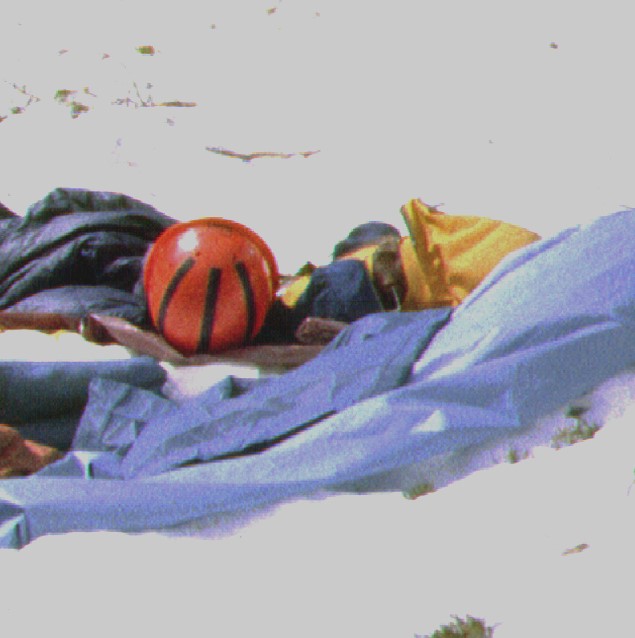
At the McMillan Cirque camp on the morning of the fourth day, it dawned bright and sunny. So, we threw back the dew-covered tarp and had a lengthy drying out session.
04 032 Clouds Shroud McMillan Spires
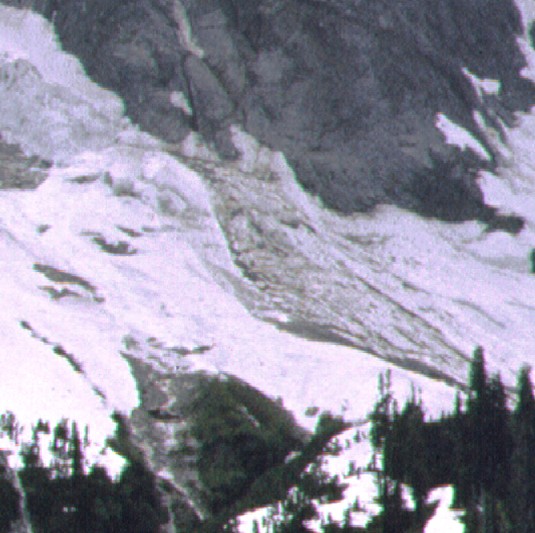
The triple summits of McMillan Spires mingle in the wispy clouds above the McMillan Glaciers. The Key ledge comes out near the base of Little Mac then traverses left off frame far side near the crest to Azure Pass. Then came a descending traverse that moved diagonally right crossing the snout of the McMillan Glaciers. Next came the ramps of the glacial polished slabs all in the cross-hairs of the hanging ice blocks.
04 033 Into Pansy Cirque snow covered Brush John B
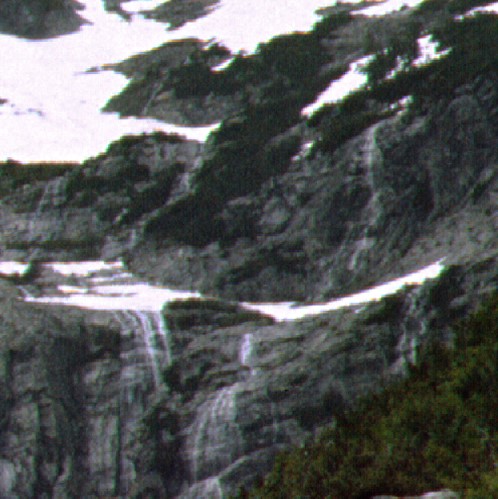
Departing McMillan Cirque we found a convenient snow covered slot the lead into the little high valley Southeast of Mount Fury.
04 034 John B near Water Falls in Pansy Cirque NCNP
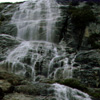
Between the neck raking heights and rumbling ice of the Terror Group and the stark cliffs of the Fury Group, the climbers found peaceful Water Falls. They called it Pansy Cirque. NCNP
04 035 Red Heather is Phyllodoce Enpetriformis
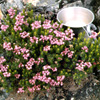
Red Heather is Phyllodoce Enpetriformis. This hardy plant is common to mountain slopes in temperate regions throughout the world. Many species have attractive bell-shaped blossoms and are consequently popular as cultivated ornamentals. Characterized by needle-like leaves with white, rose, or yellow flowers this is a True Heathis (genus Erica). It takes five years to grow a palm sized woody plant. NCNP July 1976
04 036 Pansy Peak and Glacier on Picket Traverse
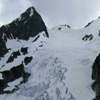
The SW Pk of Mt Fury holds a hanging glacier on its SE slope. This area of gentle Alps was in contrast to Mt Terror to the S and Mt Fury to the N. The name Pansy Peak seemed fitting. NCNP
04 037 Up the steep out of Pansy Cirque McMillan Gl
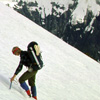
The Climbers haul out of Pansy Cirque, and near the halfway point on the Picket Traverse. Across the valley is the McMillan Gl. The occasional booming report of crashing ice reminded the climbers of their wild and remote location. The traverse route they followed dropped diagonally from Stetattle Pass in the upper left, across the fresh rock slide, along the sloping ledges below the ice, and down the avalanche fan. NCNP 76
04 038 First view of Luna Cirque and Glacier
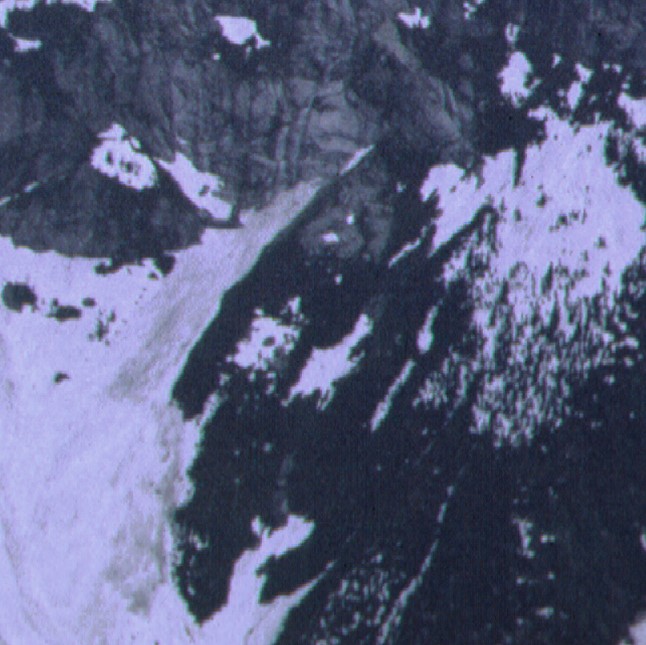
The First view of Luna Cirque and its hanging Glacier. The summits of the Northern Picket Range are all in the clouds.
04 040 Luna Peak and Mt Prophet at sunset
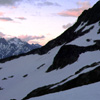
The dark silhouette of Luna Peak skewers the evening sky. This rocky isolated peak is offset to the East and separated from the rest of the Picket Range, and yet connected with a high crescent shaped ridge. The crescent ridge and satellite position of Luna Peak makes its name especially appropriate. Twin Spires (Mox Peaks) and Mount Spickard are off in the distance to the Northeast. North Cascades National Park.
04 041 Moonshine on the southern Pickets Terror Group
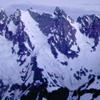
As the moon rose over Luna Pk from their camp on the crescent ridge, the Climbers watched the moonshine illuminate the serrated crest of the Southern Pickets Range. The Terror Group from left to right: McMillan Spires; Inspiration Towers and Inspiration Peak; The Pyramid; Mt Degenhardt, Mt Terror; The Rake (The Blob); Twin Needles; Himmelhorn; and the Mustard Glacier. North Cascades National Park. July 1976
04 042 Warren Smiles in the Morning sun with Mt Fury
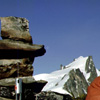
Camp was made at seven thousand feet on the crescent ridge between Luna Peak and Mount Fury (background). After a candlelight dinner, the late show was a spectacular and lengthy display of the Aurora Borealis. The Northern Lights danced through the night above the heights of Mt Redoubt. At dawn the fifth day during the Picket Traverse, it was difficult to get out of the sleeping bag. North Cascades National Park.
04 043 Southern Pickets in the morning sun
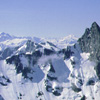
McMillan Spires lean into the morning sun. The slanting rays reveal the intricate crevasse system in the McMillan Glaciers that hang on the north side of the Terror Group. The clear cool morning air extends visibility south to Glacier Peak, some fifty miles distant. The view is from camp on the crescent ridge between Luna Peak and Mount Fury. Picket Traverse - Southern Picket Range - North Cascades National Park.
04 044 Crescent Ck Spires Mt Despair Pansy Pk
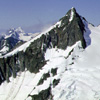
The pointed crests of the Crescent Creek Spires pierce the clear morning sky. The Rake (The Blob), The Twin Needles, Himmelhorn, Ottohorn and The Frenzel Spitz stand above the hanging ice of the Mustard Glacier. To the right is the Southeast Peak of Mount Fury (aka Outrigger Pk). Between is the gap of Picket Pass with the double summits of Mt Despair in the distance. Picket Range; North Cascades National Park. July 76
04 045 Mount Fury and Phantom Peak
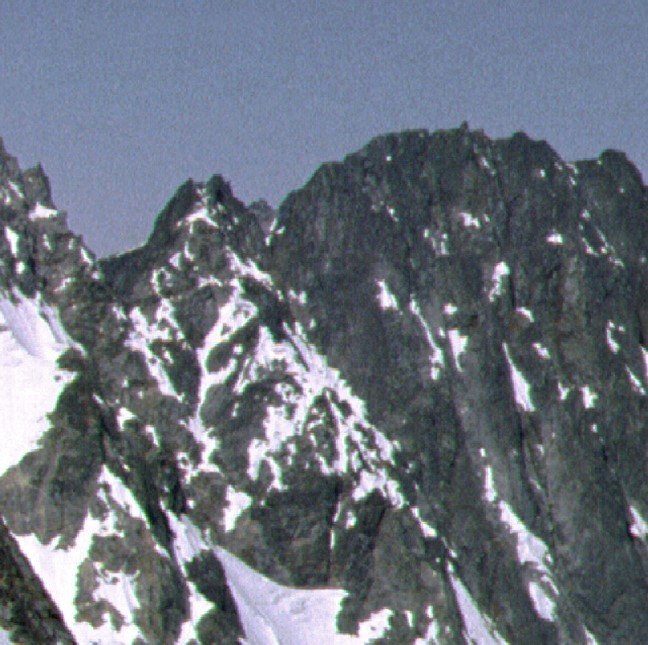
Mount Fury and Phantom Peak from the Crescent ridge camp.
04 046 Crooked Thumb Mt Challenger Luna Cirque Gl
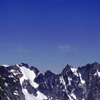
The dark walls of the Northern Picket Range rise abruptly above the hanging ice of the Luna Cirque Glacier. To the right is the broad summit of Mt Challenger with its ice sheet blanketing Challenger Arm. Left center is Crooked Thumb Pk and Phantom Pk further left. The first known explorations of the Luna Creek headwaters occurred in the summer of 1937 by Bill Cox and Will F Thompson. North Cascades National Park.
04 047 Summit rocks of Luna Peak John B
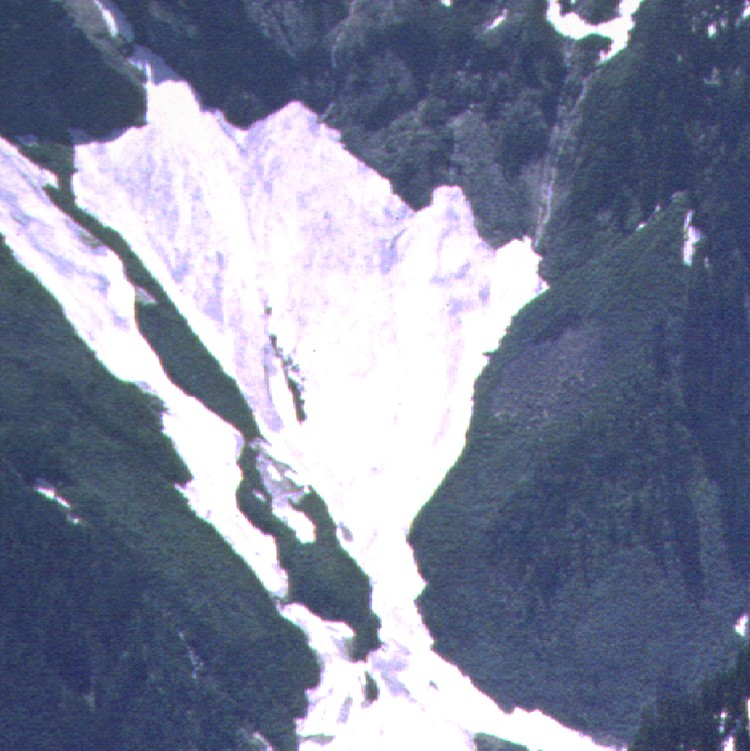
Looking down on the previous days McMillan Cirque camp five thousand feet below. This view is from the summit rocks of Luna Peak.
04 048 Picket Range Terror Grp McMillan Cirque P1
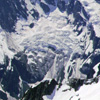
It is understandable why the Picket Range remained unexplored for so long, even on foot. Even the notoriously fearless prospectors made no claim to visits in this extremely rugged area. It was not until 1963 that the first recorded alpine traverse was made of the Picket Range when Alex Bertulis and Half Zantop came in from the south on a harrowing 10-day trek. Southern Picket Range; North Cascades National Park. 7/76
04 049 Picket Range from Luna Pk Mt Fury Pan2
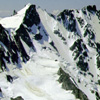
From the summit of Luna Peak, Mount Fury and Outrigger Pk fuse with the rugged topography in the center of the Picket Range. In the distant center is the dominant rounded hulk of Mount Blum. The Mt Blum was once called "Old Baldy" or "Baldy", and then was later formally named for John Blum, a Forest Service fire patrol pilot who was killed in a tragic crashed near Snoqualmie Pass in 1931. North Cascade Park. July 76.
04 050 Mt Baker and Mt Shuksan Luna Cirque Pan3

From the false summit (West Point) of Luna Peak, Mount Baker and Mt Shuksan frame Crooked Thumb Peak beyond Luna Cirque. While near New Dungeness on April 29, 1792, Joseph Baker, an officer with Captain George Vancouver, first sighted the white-hued volcano. Vancouver named the mountain for him. To the Lummi tribe of Puget Sound, the glacial clad cone was Koma Kulshan. North Cascade National Park. 7/76.
04 051 Luna High Route Big Beaver and Jack's Mtn
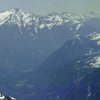
Looking out the Luna High Route from the summit of Luna Peak. This view East is down Big Beaver Creek. Jack's Mtn is in the distance on the far side of Ross Lake. North Cascades 7/76
04 052 Warren at Snaffle Hound Pass McMillan Spires
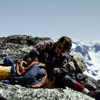
After the ascent of Luna Peak, the climbers returned to the low point on the crescent ridge. They had left their gear airing-out in the sun during the climb and upon returning, they found the cache had been disturbed. The surprisingly bold thief was still at work dragging away a sleeping bag. The climbers fought back and the intruder put up a fierce struggle for each garment. The Snaffle Hound was all of eight inches long. 7/76.
04 053 Ice Cold bubbly melt water is great Warren
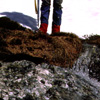
The climbers had been drinking gas-stove-melted-snow for the past two days. Here they took a lengthy break to guzzle cup after cup of the ice cold bubbly melt water. It is habit forming. 7/76
04 054 Glissading above Luna Lake Warren
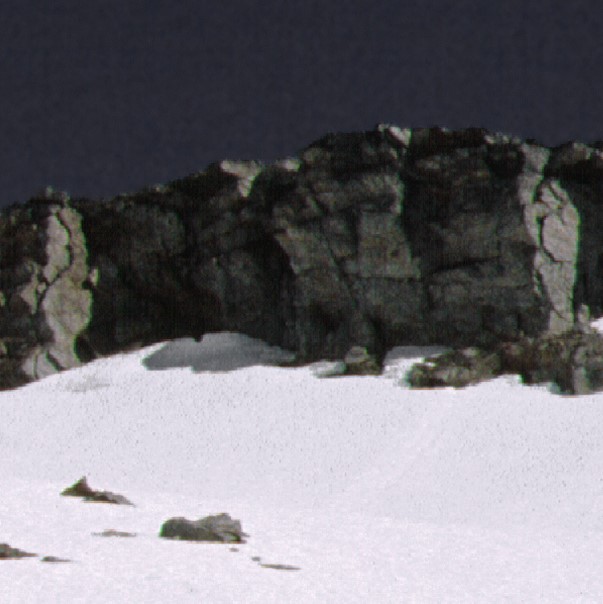
Standing Glissading on the slope above Luna Lake.
Perched high on an alp-slope closely West of Luna Peak, snow covered Luna Lake occupies a pocket carved out by a now extinct Pleistocene glacier. The route to Challenger Arm exits left to cross numerous avalanche fans and then picks up the right sloping ramp on the other side of Luna Cirque. Though here visited in the middle of July, Luna Lake is still firmly in the grips of the past winters snow. North Cascade Park. 7/76
04 056 Warren at Luna Falls glissade route
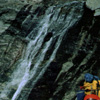
The descent to Luna Lake was a boot glissade. Like skiing without skies. The climbers had to choose the route through the cliffs above the lake. This route would be a poor choice. 7/76
04 057 Traversing Under Luna Cirque Ice
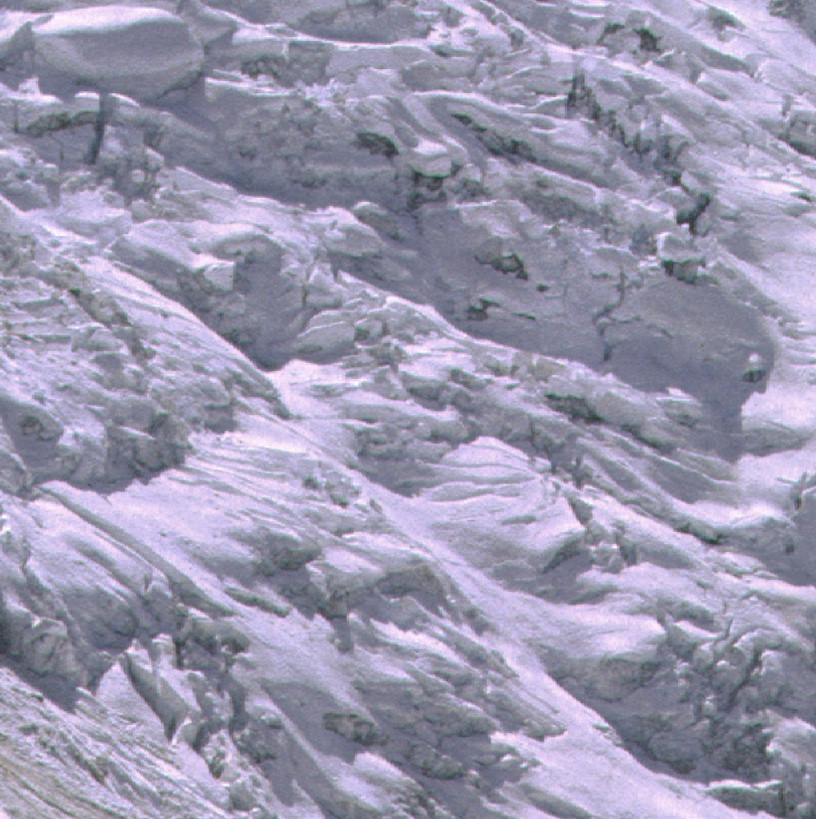
A quick traverse under Luna Cirque Ice.
04 058 Crooked Thumb Mt Challenger Luna Cirque
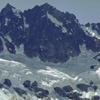
Crooked Thumb Peak and Mount Challenger are the northern hinge of a splendid continuity of hanging glaciers that ring the head of the Luna Creek cirque. Mt Challenger, with its provocative name, consists of a series of quartz diorite rock-horn summits that anchor the jagged Picket Range on the Northwest. The Mt Challenger first ascent on September 7,1936 was one of the earliest regional climbs in the North Cascades.76
04 059 Traversing below an Icefall John B
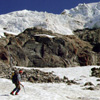
Traveling in a remote mountain range and days away from the nearest road, the climbers assume a certain level of uncontrollable risk. Some of the risk can be minimized by using common sense and by following a few simple rules. One important rule is to recognize areas prone to avalanche and adjust your route accordingly. By quickly passing through danger zones and not stopping for photos is also sound advice. 76
04 060 Lousy Lake is the source of Luna Ck
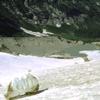
The very symmetrical nineteenth century moraine in Luna Cirque is said to be one of the most perfect in the North Cascades. The flattish area behind the moraine dam and above the small "Lousy Lake" is underlain by stagnant glacial ice. The ice is protected from melting by a layer of rock debris. In the distance at the foot of Luna Ck is Mount Prophet. It is named for early prospector and religious fanatic Tommy Rowland. 76
04 061 Mt Fury with crevasses of Luna Glacier
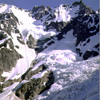
The West Peak of Mount Fury above the heavily crevassed Luna Creek Glacier. More than any other peak, Fury epitomizes the grand alpine wilderness of the amazing Picket Range. NCNP
04 062 Falls on the way to Challenger Arm John B

We used a convenient right sloping snow covered ramp to gain access to Challenger Arm. This spectacular water fall was along the way.
04 063 Heading for high camp on Challenger Arm John B
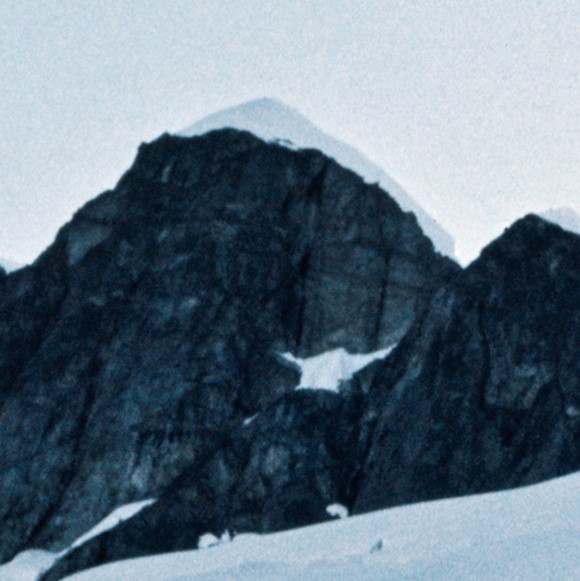
On the steep climb out of Luna cirque, the Challenger Glacier and the summit rocks seemed to come more into reach. We were aiming to make camp on Challenger Arm and be poised to make a summit attempt the next day.
04 064 Exhausting climb of Challenger Arm John B
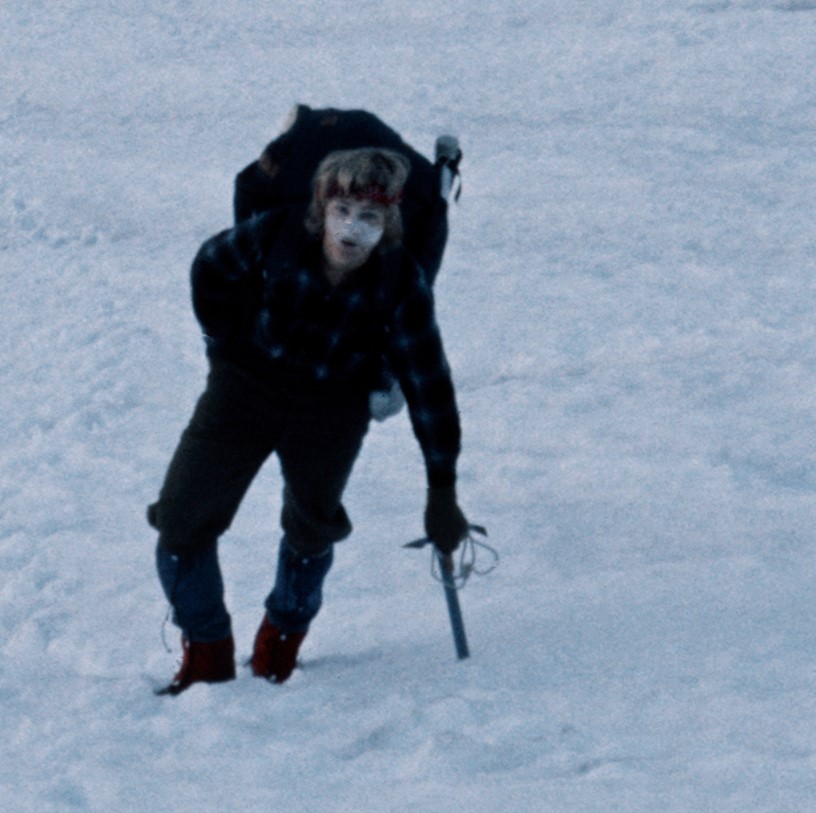
I finally exhausted my young trail breaker. The long seemingly endless grind up out of Luna cirque was taking its toll. As the sunset we convenient found a close to level heather patch to unroll the tarp.
04 065 Pink Luna Peak and Luna Lk at sunset
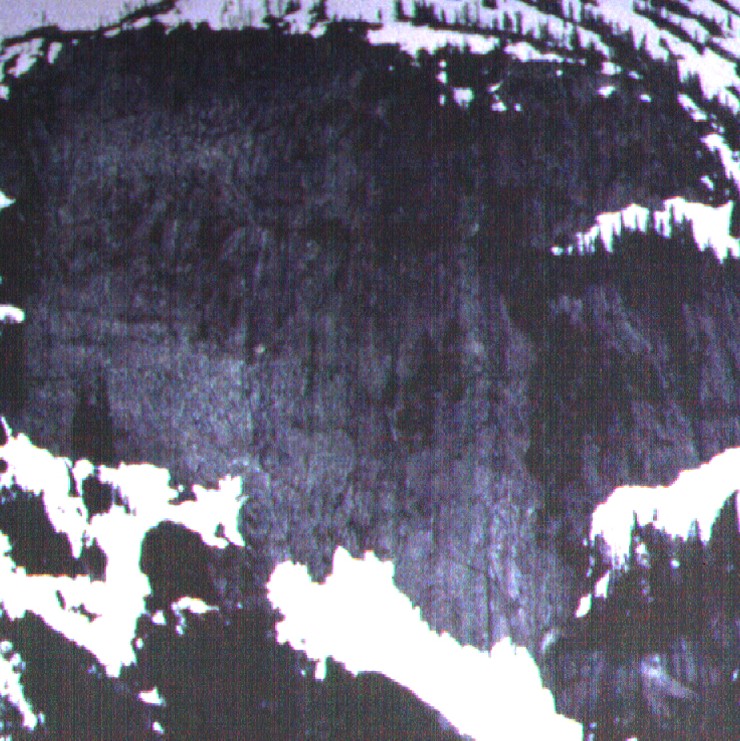
Luna Peak and the crescent Ridge hint going pink as the setting sun shadow of Mount Challenger climbs the slope above Luna Lake.
04 066 Bug free breakfast on Challenger Arm Warren
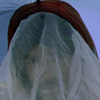
The mosquitoes of the North Cascades are notorious for their size and quantity. It is said that the only effective repellent is to use your ice axe to beat them off and to keep from being carried away. For breakfast at Challenger Arm camp the climbers had dry cereal, reconstituted milk and a square yard of mosquito netting. If you dare to increase the protein in the meal, just lift the netting. North Cascades National Park. 7/76
04 067 Challenger Arm Camp and Peaks of Luna Cirque
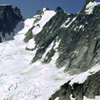
On the morning of the sixth day North of Newhalem, the climbers awoke from the bivouac on Challenger Arm. They were a little stiff and sore, but they were ready to except the challenge.
04 068 Mount Fury and Phantom Peak John B
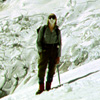
Mt Fury and its North buttress are on the left. The West Peak of Fury is in the left center. The nearly level-topped summit in the center right is Swiss Peak, distinctive because of its 1,900ft Northeast face above the glacier in the Luna Creek cirque. The first ascent in July 1968 followed the central pillar on the deeply pleated Northeast face. The second climb came in the summer of 1980; four years after this photo was taken.
04 069 Warren leads on the Challenger Glacier
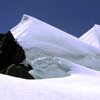
The principal feature of Mount Challenger is that it holds the largest glacier in this area of the North Cascades. The broad glacier, on the North slope of the summit crest (4 km wide), is a result of a high sloping N-facing rock plateau in a heavy snow belt. Henry Custer's journal from the First International Boundary survey in 1859, describes a large glacier wall of solid pure ice on a mountain the Indians called "Wailagonahoist".
04 071 Mt Challenger Summit pitch. Warren
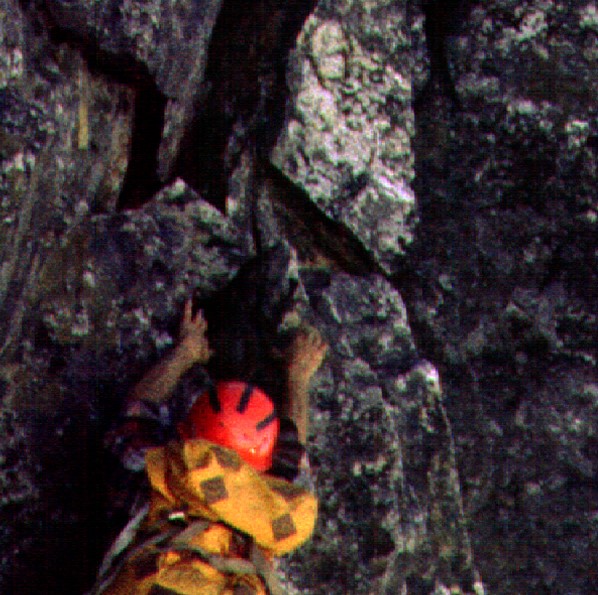
The rock of Mount Challenger is firm quartz diorite of the Chilliwack Batholith. The summit rock tower is a climb of c.TIF 50 ft on solid rock (one 5.5 move) and has three fixed pins. NCNP '76.
04 073 Warren on the summit of Mt Challenger
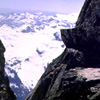
The summit of Mt Challenger is the culmination of an impressive cliff structure that climbs in crescendo from Phantom Peak. Some have called it the Northern Bastion of the Picket Range.
04 074 Crooked Thumb with Mt Baker Mt Shuksan Mt Ruth
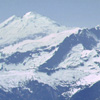
From the summit of Mount Challenger, the view to the West is over the top of Crooked Thumb Pk, and beyond to the cone of Mt Baker and the blocky massif of Mount Shuksan. Mt Shuksan has no equal in the Cascade Range when one considers the structural beauty of its four major faces and five ridges. There is no other sample in the American West of great icefall glaciers derived from a high plateau. North Cascades 7/76
04 075 John B raps off Mt Challenger Mt Baker Mt Shuksan
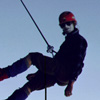
After the successful ascent of Mount Challenger, the Climbers descended by means of repel. The repel was set on the shear North Face of the summit spire by looping nylon webbing around the rock horn at the top. The climbing rope was threaded through the sling to double the rope and a figure eight friction device or break is used on the descent. In the end, the rope is pulled through, leaving the nylon sling on the summit.
04 076 John B on Challenger Gl Wiley Lk High Route beyond
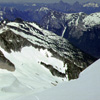
On the descent of the Challenger Glacier and the return to Challenger Arm, the Climbers paused to check out the Wiley Lake High Route. The plan was to use the Wiley Lk High Route as an exit route from the Picket Range. This most common approach for Mount Challenger and the Northern Pickets, extending from near Beaver Pass and affords the easiest going on bench and meadow South (right) of the crest. NCNP 7/76
04 077 Crooked Thumb Mt Challenger above Challenger Arm
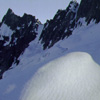
The serrated crest of the Northern Picket Range ascends from the South to culminate at the needle-like summit of Mount Challenger. The peak with the long snow patch on its East face is Phantom Pk and the summit with the tilted tower on the top is Crooked Thumb Pk. The point just South of Crooked Thumb Peak is Ghost Peak. The alp-slope of Challenger Arm (foreground) splits the Challenger Glacier ice flow. NCNP 7/76
04 078 Phantom Crooked Thumb above Luna Cirque at sunrise
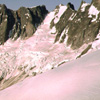
On the morning of the seventh day during the Picket Traverse, the Climbers awoke to a glorious sunrise that highlighted the chaotic jumble of hanging ice in Luna cirque. All the jagged summits of the Northern Picket Range stood tinged in pink from the morning sun as to bid farewell. Ahead lay the Wiley Lake High Route for 5.5 miles to Beaver Pass. Then 8 miles down Big Beaver Creek trail to 39-mile Camp outside the Park.
04 079 Borealis Camp Wiley Lk Redoubt John B
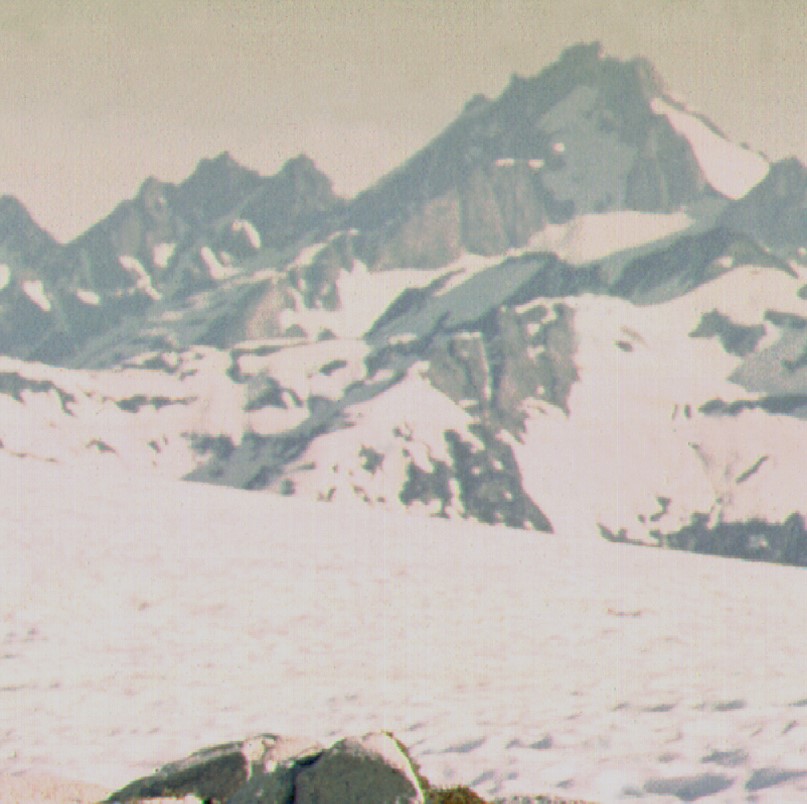
Wiley Lake camp after a long night watching the Arora Borealis show above Mount Redoubt.
04 080 Warren & Mt Redoubt on the Wiley Lk High Route
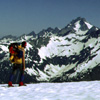
The climbers head out the Wiley Lake High Route. The view to the North is dominated by Mt Redoubt. Explorer Henry Custer, while surveying North of Depot Creek on August 2, 1859, wrote of "sharp, frightful, fantastic" peaks, which included Mt Redoubt as the center of his attention. First ascent of Mount Redoubt was made by Canadian climbers Jimmie Cherry and Bob Ross in 1930. North Cascades National Park. July 76.
04 081 Luna Cirque from Wiley Ridge John B
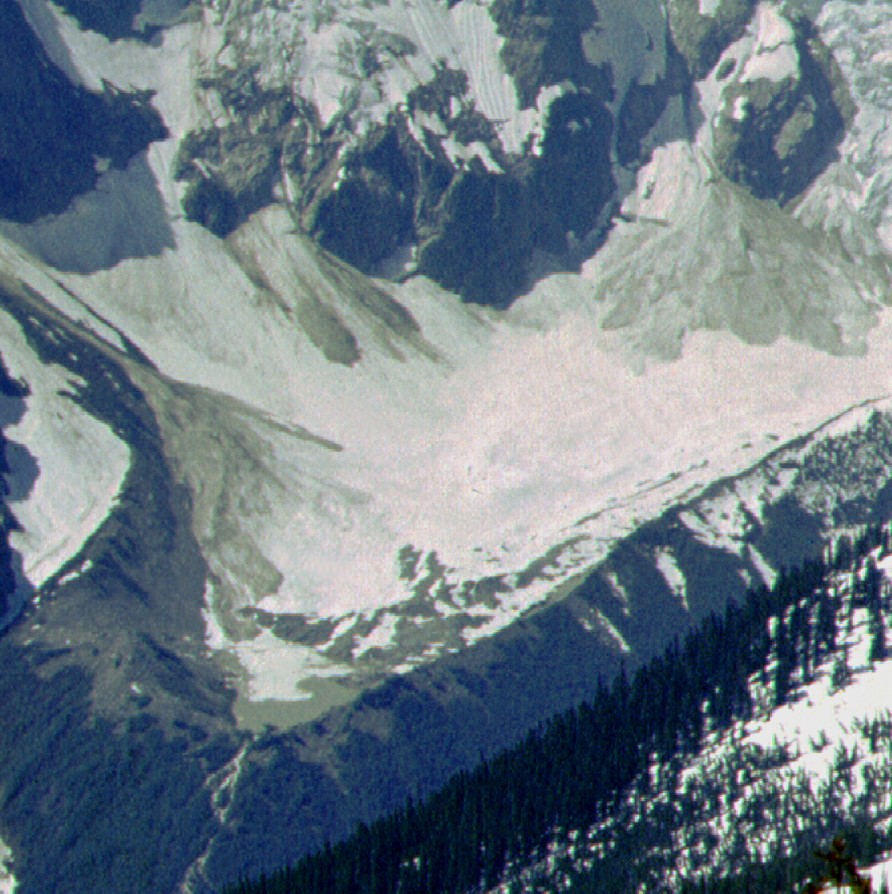
On the exit of the Picket Range along Wiley Ridge, it was good to turn around and soak up the view back into Luna Cirque.
04 082 Luna Cirque and John B on Wiley Lk High Route
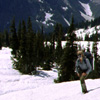
The bench-meadow area along the Wiley Lk High Route has wondrous views of Luna Cirque and the Northern Picket Range. When combined as a loop with the Luna Pk High Route, it is said to reveal the "Frosting of the North Cascades". When Cox and Thompson first explored Luna Creek area in 1936 they found no sign of human visitation and it has remained the wildest and least explored region in all the Cascade Range.
04 083 Lunch Stop at Big Beaver Pass Warren
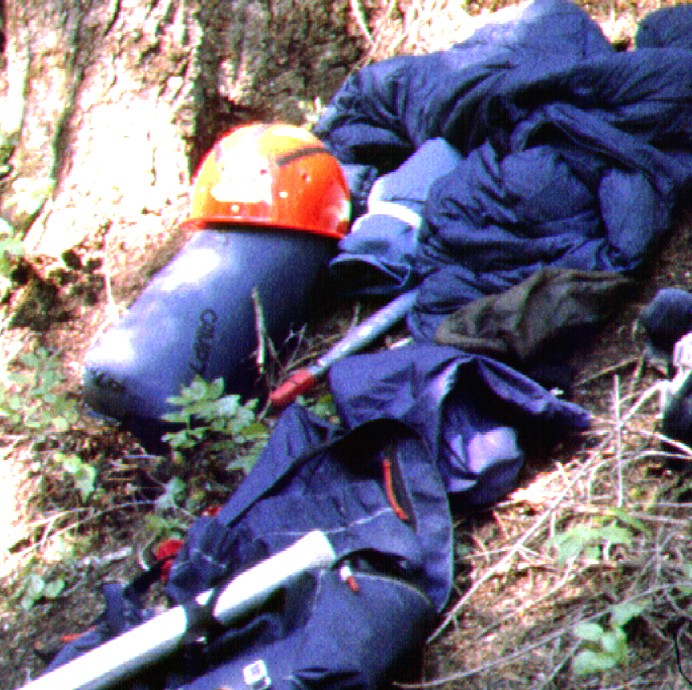
Once on the Big Beaver trail we stopped at the first water to wash off the fur needles from the brush fight at the end of the Wiley Lake High route. We made it a major lunch stop to brew mint tea, rehydrate and prepare for the nine miles down the Big Beaver Creek trail.
04 084 Ten Mile Camp Big Beaver Ck Warren
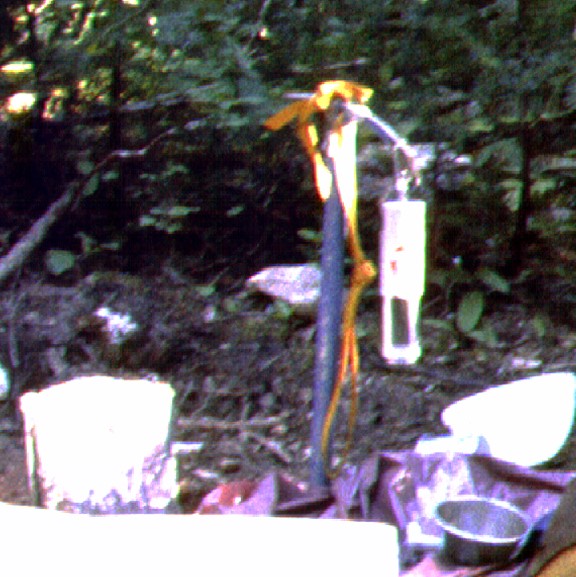
We stayed the night at 39 Mile Camp. We never figured out what it was 39 miles from. Our number was only eleven miles to Ross Dam.
04 085 Fisherman John B Big Beaver Creek
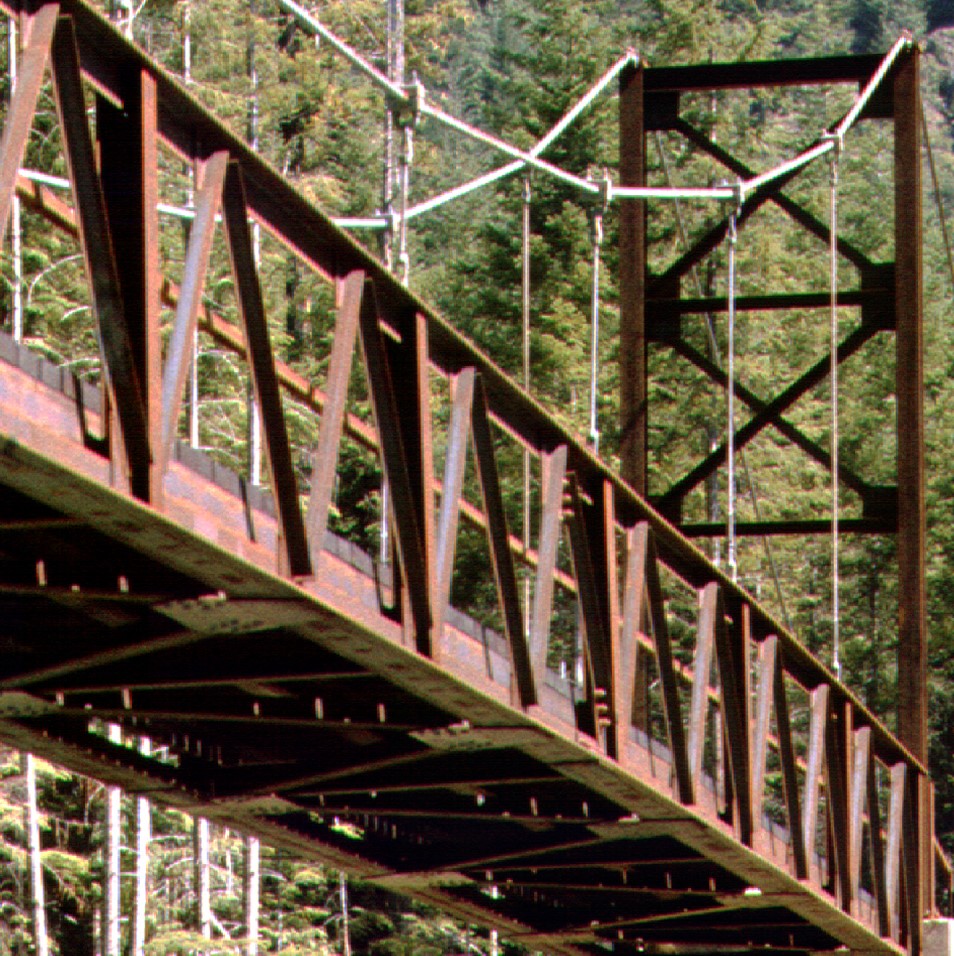
Half way to Ross Dam the fishing rod that had traveled all the way through the Picket Range finally came out. Then the only thing caught was the Big Beaver Creek bridge on an errant cast.
|
|
|
|
|
|
This site created and maintained by THE IBEX - Page last revised:
|
|